Training Adaptation
If you've read some of our other factsheets on training, or had one of our flamme rouge performance programmes , you will be familiar with our three weeks on, one week off protocol. If you're not, it goes like this; green week (hard), orange week (harder), red week (hardest), grey week (adaptation).
The next green week starts out at the intensity of the previous orange week and so the cycle continues until you pick up a PB or a trophy.

This routine isn't for everyone (it is punishing and can be tough mentally as well as physically) but it works for an awful lot of people who have an awful lot of trophies in their awfully big trophy cabinets.

A critical aspect of our plans is the recovery. Recovery is training; it's during the active recovery phase that your adaptation takes place.
This factsheet concentrates on what the people in white coats think about it…
But before reading it you may want to amuse/bore/entertain yourselves by swotting up on lactate again, as it forms an integral part of the knowledge to be gained from this factsheet.
Exercise Fundamentals
First a recap of what we know, or should know, about what happens to our bodies
when we exercise.
 When we
place an exercise load on our bodies, something, somewhere inside, gets
it in to its head that we need to be ready for this effort loading in
case we try to do it again.
When we
place an exercise load on our bodies, something, somewhere inside, gets
it in to its head that we need to be ready for this effort loading in
case we try to do it again.
Our body adjusts to the overload it has just received and tries to make that our default load setting.
That's called adaptation; but how long does it take for our bodies to adapt? And how often do we need to keep doing it to make sure we “remember” where the default load is? As ever, we'll try to answer these questions later in the factsheet.
To keep things simple, there are two types of exercise we can undertake; aerobic or anaerobic, with or without oxygen. It's either easy or it's hard, we can talk or we can't, the world is in focus or it isn't, it doesn't hurt or it hurts a lot! Whatever measure you use to differentiate between them, they both elicit some sort of training effect on our body.
It is a given that endurance training raises the level of work required at which lactate begins to accumulate in the blood. Or, to put it another way, with endurance training, for the same level of work, lactate production is reduced.
This is dead easy to prove or disprove if you've spent a small fortune on lactate measuring equipment. Which I have!
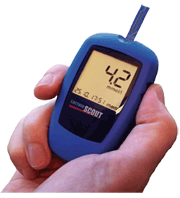
You ride at a sub-max effort (say 200 watts) for a couple of minutes to let the body settle down, then take a lactate measurement.
You go off, do “a period” of endurance riding, come back and retake the lactate measurement test.
Test B lactate will be lower than Test A lactate, proving our theory of adaptation. We've zeroed right in on the marker that counts, by taking a measurement within the blood, in real time.
Feedback is instant and empirical.
A more sophisticated, and expensive, way of proving the above is to perform a Lactate Performance (Ramp) Test, but that's a whole different world of pain and suffering! You wouldn't want to do one of them each week to monitor fitness.
An alternative sub-max test to the one above can be carried out in the comfort of your own shed/garage/front room with a turbo and a heart monitor. Pump your rear tyre to 100 psi, set the resistance on your turbo to a lowish setting and ride at 25 kph for five minutes.
If you haven't got a lactate measurer (and who has?) then you can use heart rate. It's not as accurate but it will give you a flavour of the answer we're after.
Heart Rate B will (everything else being equal) be lower than Heart Rate A.
The White Coat Test
For a
more sophisticated and more accurate review of what happens to
your body, and over what time frame, we can look to the work of Gaesser
& Poole, from the University of California's
Department of Kinesiology.
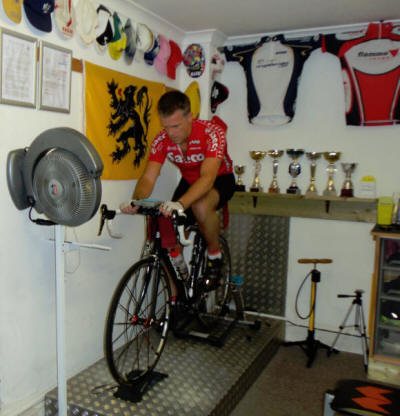
They undertook tests with healthy, untrained, male and female riders in their mid-twenties. Each rider undertook two Ramp Tests, prior to the exercise regime getting underway, to provide a VO2max and Lactate baseline from which improvements could be measured. Then the training began.
It's vital, in studies such as this, that variables are kept to a minimum and everything that can be controlled is controlled. I won't go in to all the detail here, but you can rest assured, the preparation was comprehensive!
So to the training...
To
provide an element of control, each subject rode a Monark Ergometer for
30 minutes a day, six days a week, for three weeks. They rode at a constant level of effort throughout the test that
correlated to 70-80% of their measured VO2max.
On the 7th day, they didn't rest, they did a Ramp Test! This goes against our normal expectations of exercise and testing, but you have to remember that the previous workloads had been sub-maximal, not full-on intervals. And this work was carried out in the aid of research not sporting performance.
Our Survey Said...
After three weeks, of hardly what you'd call intensive exercise, the
original baseline setting tests were repeated. The results were ready for interpretation.
A significant VO2max increase of 11.1% was recorded, with the OBLA (Onset of Blood Lactate Accumulation) increased (delayed is a better term to use) by 14.2%.
As a percentage of VO2max, the lactate turning point also increased markedly from 49.5% (±1.8%) to 56.2% (±3.1%). In contrast, the Ventilatory Threshold (VT) did not significantly change throughout the three weeks. This disassociation between the lactate turning point and the VT grew bigger as the weeks went by.
Ventilatory Threshold?
Keeping with our “layman status”, the best way to describe VT is the
point during progressive exercise (a Ramp Test or a hill!) where your
breathing rate increases above and beyond your body's ability to make
use of the oxygen in those breaths; the limit of your oxygen uptake.
It's the point at which carbon dioxide output begins to increase exponentially.
So you're gulping and gasping in air like a good ‘un, but it ain't making any difference to your speed, performance or comfort. You've probably all experienced it at some point during the season. It's usually the point where you start looking down at the road just ahead of your front wheel with the "thousand yard stare!"
Confused?
I'm sure that at this point of your cycling career, we don't need loads
of lab tests to tell us that if we exercise, we get fitter, faster,
stronger. Your time trial times
and race results will tell you that without taking a test. I'm sure you've
all found, and felt it, for yourselves.
But what's actually getting fitter? Is it your speed, your strength, your endurance, your ability to suffer, or a combination of all these factors?
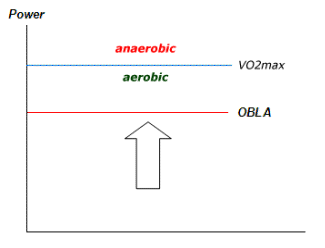
It's reasonably obvious for us to expect an increase in the Onset of Blood Lactate Accumulation and Ventilatory Threshold by going out and riding our bike hard for a bit. But as the results above point out there is a disassociation between these two physiological responses.
They both respond differently to continuous exercise. And it would be fair to assume that interval training would illicit a different adaptation to the continuous load variety. Whereas OBLA can be altered by both continuous and interval training alike (although not equally), VT is best addressed through interval training.
We've discussed this before but your objective, as a performance athlete, is to get your OBLA as close to your VO2max as you can. Which means you have to mix and match your training if you're to make the most of your time in the saddle.
You have to do different things at different times of the season and in the right order to get the right responses. It's called periodisation.
If you only take two things from this factsheet, remember these.
▼
Lactate adaptation happens relatively quickly and is
best addressed by riding at a continuous sub-maximal pace for an
extended period of time.
▼
OBLA Adaptation
Previous, comparable, exercise studies had found that it was possible to
measure an increase in the OBLA by up to 600ml O2/min over a 40 week
period.
The Gaesser & Poole study measured an OBLA increase of 482ml O2/min in three weeks! What the numbers mean isn't important here, just look at the percentage gains in the short space of time.
Which brings me back to the previously discussed 80/20 Pareto Principle. You get 80% of your gains for 20% of your effort.
So it's possible to deduce that for “Lactate Training” the biggest returns come in the first few weeks.
There are many theories as to why; remember we're still in the infancy for sports science so these things may take a while to understand. One put forward is that, as we exercise we use more muscles, our muscles use oxygen, they adapt quickly to oxidize pyruvate, which allows lactate pooling to be delayed.
It's a theoretical harmonious circle. The lactate is still there in the same quantity, it just gets metabolized quicker, delaying the Onset of Blood Lactate Accumulation.
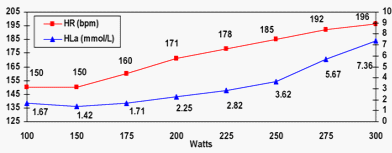
Another theory recognizes the fact that reduced catecholamine levels can be observed after three to four weeks of exercise.
Catecholamine is a new word for our website. Catecholamines are a group of “fight-or-flight” hormones released, in response to stress, by the sympathetic nervous system's adrenal glands.
Amongst this group are adrenaline, noradrenaline and dopamine. They're derived from the amino acid Tyroseine and are bound to plasma proteins circulating in the bloodstream. Catecholamines may reduce the level of muscle glycogenesis thereby reducing the production of lactate, which delays the OBLA.
To be honest, no one knows, it's probably a combination of both and whole lot more beside. It may take a little more work on the Genome Project before we can say for certain. But where's the fun in knowing? Just ride your bike and enjoy it.
VO2max
Adaptation
Daussin, and a team of clever people at the CHRU of Strasbourg, carried
out parallel 8 week studies on subjects that undertook either continuous
training or interval training.
VO2max did increase in both groups; by 9% for the continuous group but by a substantially increased 15% for the interval exponents. Remember percentages are dodgy numbers. It's not just 6% better, it's 60% better, nine is 60% of fifteen.
Now then, VO2max is "genetically coded" by our parents. It's related to our lung capacity and our ability to make full use of the oxygen we draw from that capacity. That ability, to some extent, is set by our mitochondrial density.
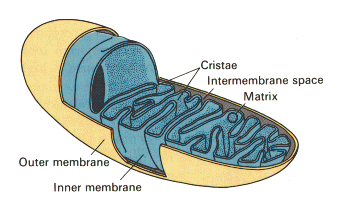
We'll discuss these in a month or two, but what you need to know is that Daussin found that mitochondrial capacities only increased with the interval group.
Their results suggested that fluctuations of workload and oxygen uptake are key factors in improving muscle's oxidative capacities over exercise duration.
The
Message
So there we are; as clear as mud.
The reason I highlighted the word "untrained" in the text above it to draw attention to the fact that these weren't full-on racing cyclists.
The reason they use untrained individuals is that the changes can be substantial and can be easily measured. Do not expect to see the same improvements! The figures are indicative and show a trend.
It is highly unlikely that you will see a 14% increase in anything, other than boredom, by riding for 30 minutes a day at sub-maximal levels. But the concept is the same.
Riding at sub-maximal levels for sustained periods of time, will bring improvements. However, depending on what physiological response you're trying to improve you will need to plan your sessions accordingly.
The suggestion, in my opinion, is that lactate adaptation can be gleaned within a very short time frame, with the correct training intensity, session duration and time period. VO2max adaptation takes a while longer. Lactate sessions, initially, require a continuous, steady-state session along the lines of the FTP sessions on our Training Drills Page.
We do these sessions a couple of times in our winter preparation plans. Hardly exciting or dynamic (a bit like myself) but they do give fantastic results (leave it!). We then move on to increasingly shorter and harder intervals, with decreasing recoveries, as the season or our objectives get closer.
When building your training plans for a key objective, work out your strengths and weaknesses and try to factor in the time frames above to best meet your needs in addressing the physiological response you wish to elicit.
There's no use trying to raise your VO2max levels in the three week run up to an event! All you'll do is make yourself more fatigued, reduce muscle glycogen and decrease your recovery potential.
Get your endurance work in first to build a solid base, then get some lactate sessions knocked out and adapt quickly, do your VO2max stuff (hard on the head as well as the legs) come back and brush up your lactate tolerance.
There it is. A training plan in one paragraph. How hard can it be?
Be Good, Ride Hard, Suffer Well.








